混淆矩阵是评估模型结果的一种指标 用来判断分类模型的好坏
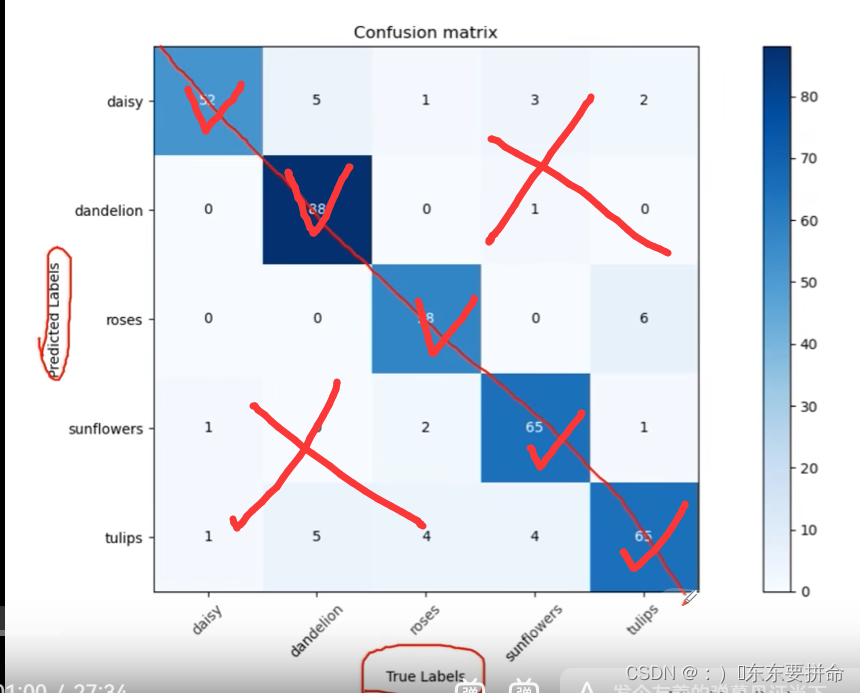
预测对了 为对角线
还可以通过矩阵的上下角发现哪些容易出错
从这个 矩阵出发 可以得到 acc != precision recall 特异度?
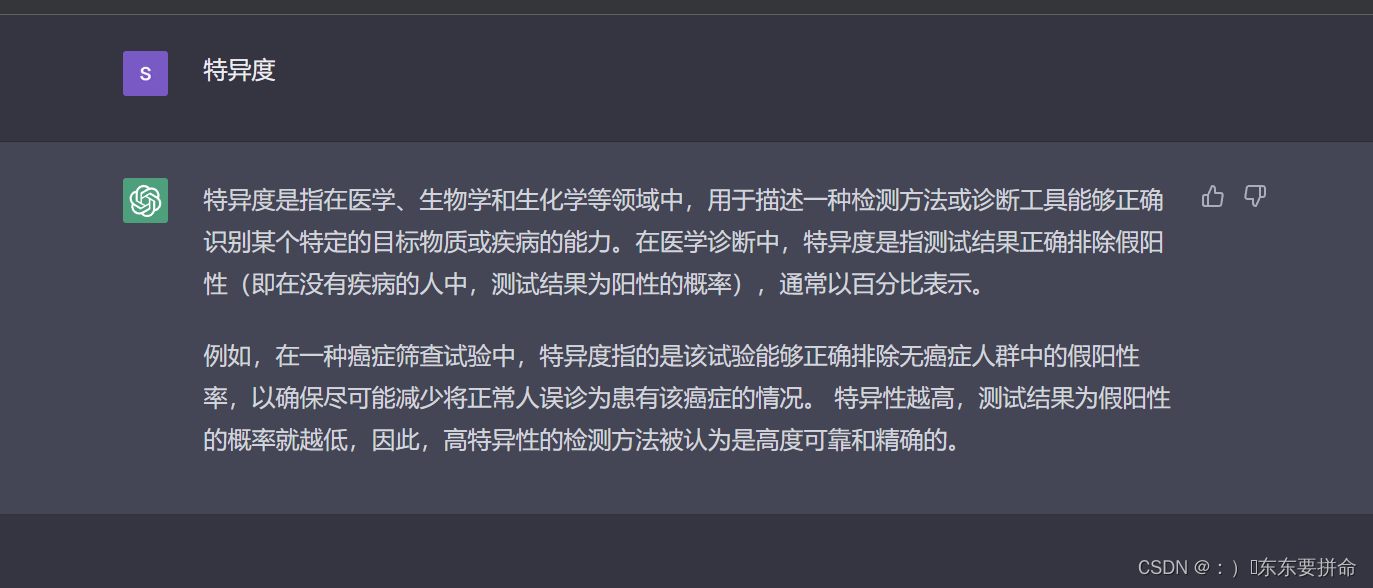
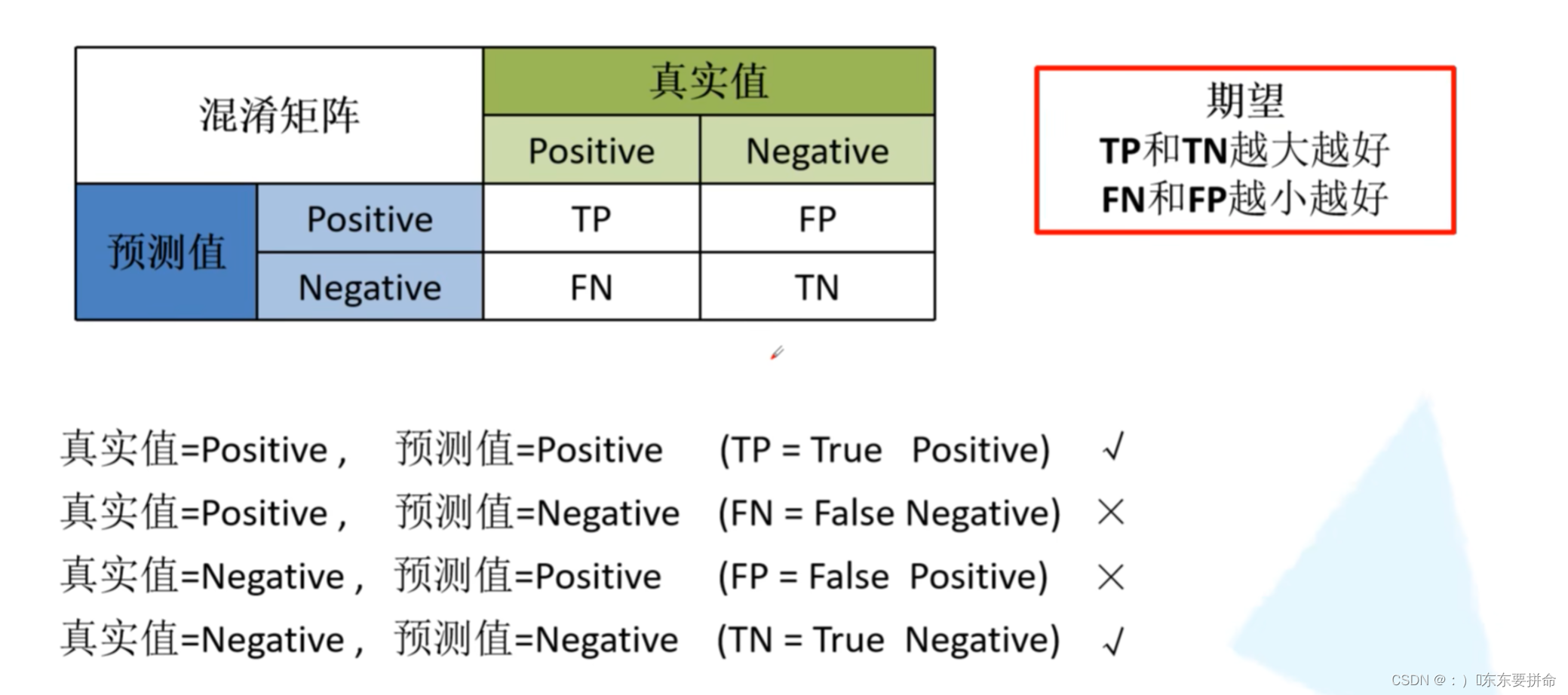
目标检测01笔记AP mAP recall precision是什么 查全率是什么 查准率是什么 什么是准确率 什么是召回率_:)�东东要拼命的博客-CSDN博客

acc 是对所有类别来说的
其他三个都是 对于类别来说的
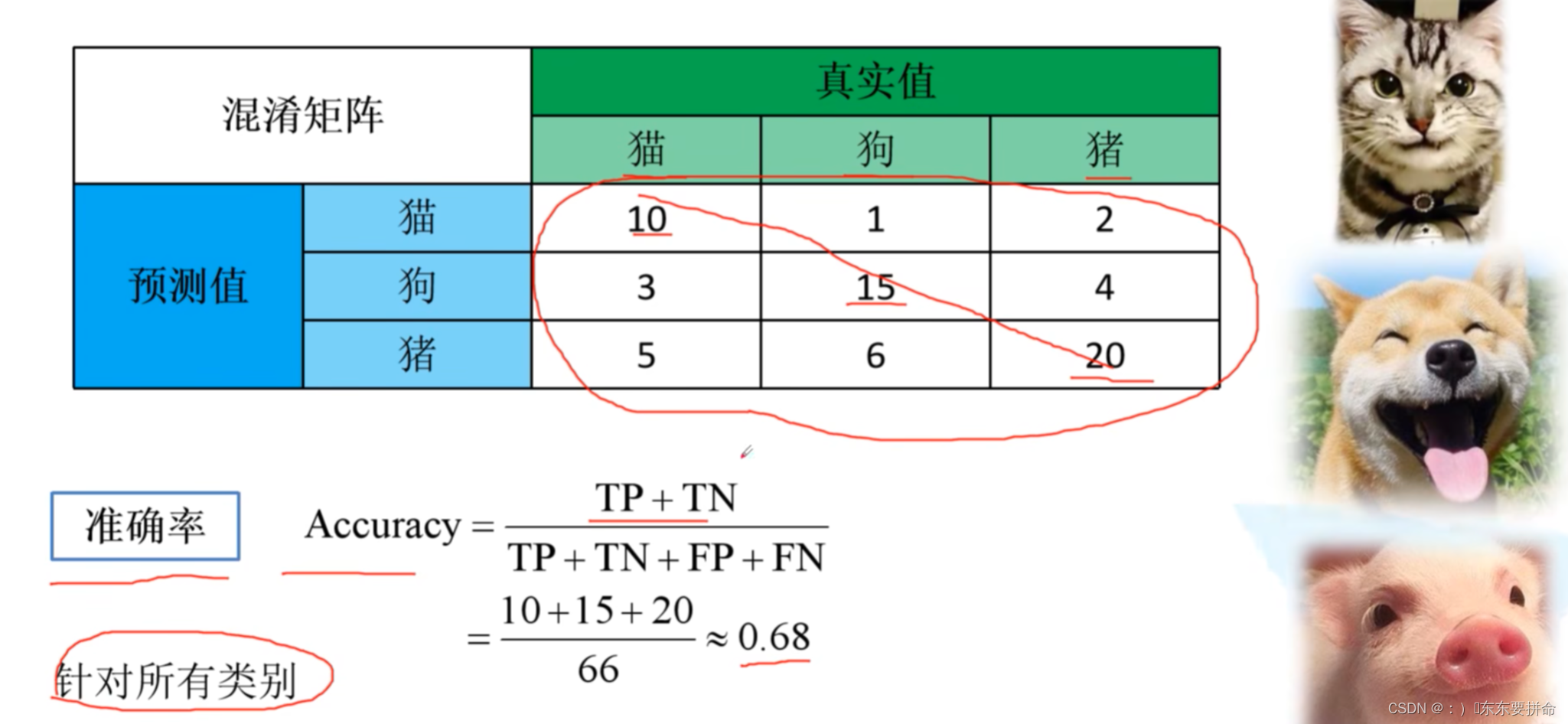
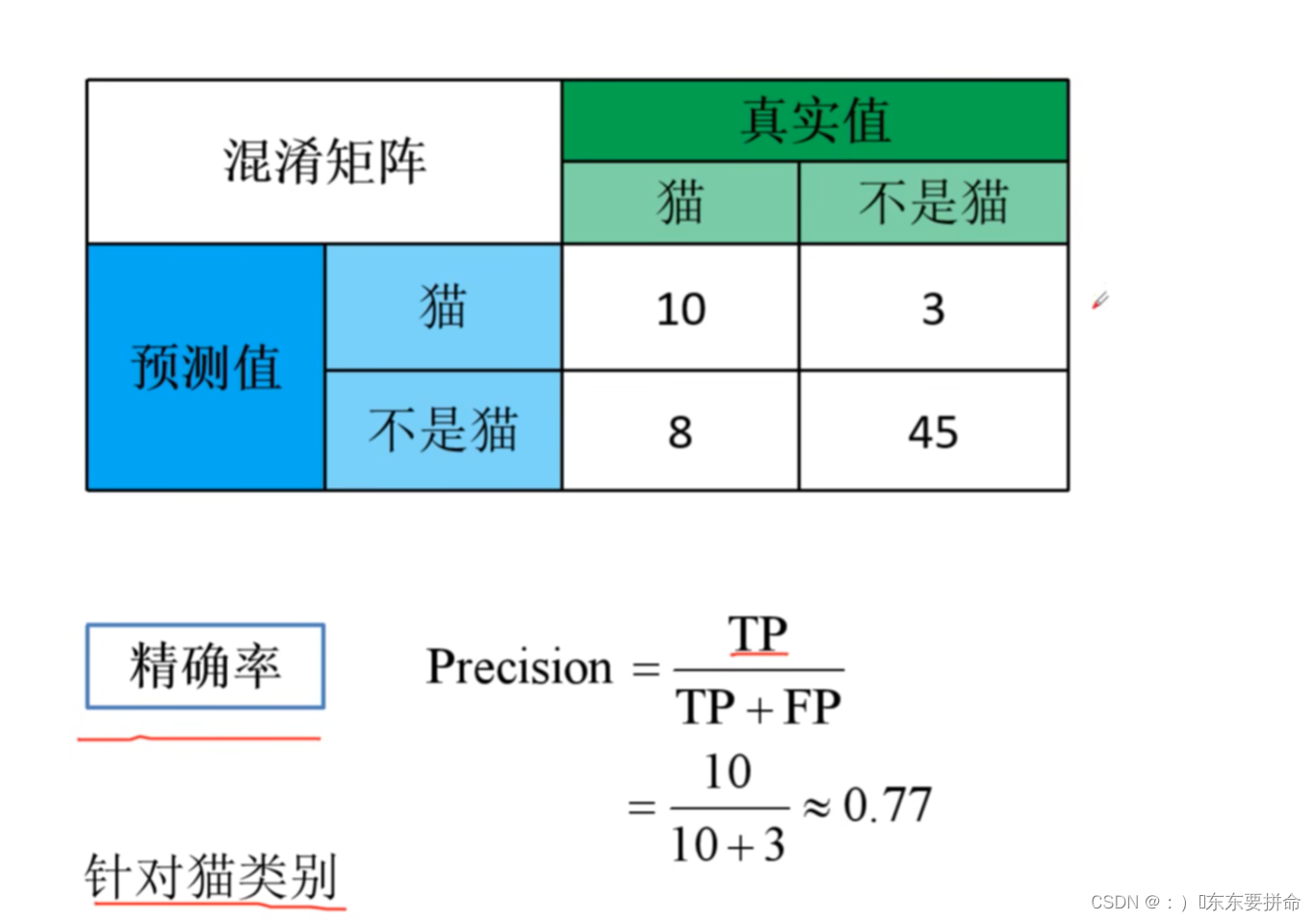
下面给出源码
import jsonimport osimport matplotlib.pyplot as pltimport numpy as npimport torchfrom prettytable import PrettyTablefrom torchvision import datasetsfrom torchvision.models import MobileNetV2from torchvision.transforms import transformsclass ConfusionMatrix(object): """ 注意版本问题,使用numpy来进行数值计算的 """ def __init__(self, num_classes: int, labels: list): self.matrix = np.zeros((num_classes, num_classes)) self.num_classes = num_classes self.labels = labels def update(self, preds, labels): for p, t in zip(preds, labels): self.matrix[t, p] += 1# 行代表预测标签 列表示真实标签 def summary(self): # calculate accuracy sum_TP = 0 for i in range(self.num_classes): sum_TP += self.matrix[i, i] acc = sum_TP / np.sum(self.matrix) print("acc is", acc) # precision, recall, specificity table = PrettyTable() table.fields_names = ["", "pre", "recall", "spec"] for i in range(self.num_classes): TP = self.matrix[i, i] FP = np.sum(self.matrix[i, :]) - TP FN = np.sum(self.matrix[:, i]) - TP TN = np.sum(self.matrix) - TP - FP - FN pre = round(TP / (TP + FP), 3) # round 保留三位小数 recall = round(TP / (TP + FN), 3) spec = round(TN / (FP + FN), 3) table.add_row([self.labels[i], pre, recall, spec]) print(table) def plot(self): matrix = self.matrix print(matrix) plt.imshow(matrix, cmap=plt.cm.Blues) # 颜色变化从白色到蓝色 # 设置 x 轴坐标 label plt.xticks(range(self.num_classes), self.labels, rotation=45) # 将原来的 x 轴的数字替换成我们想要的信息 self.num_classes x 轴旋转45度 # 设置 y 轴坐标 label plt.yticks(range(self.num_classes), self.labels) # 显示 color bar 可以通过颜色的密度看出数值的分布 plt.colorbar() plt.xlabel("true_label") plt.ylabel("Predicted_label") plt.title("ConfusionMatrix") # 在图中标注数量 概率信息 thresh = matrix.max() / 2 # 设定阈值来设定数值文本的颜色 开始遍历图像的时候一般是图像的左上角 for x in range(self.num_classes): for y in range(self.num_classes): # 这里矩阵的行列交换,因为遍历的方向 第y行 第x列 info = int(matrix[y, x]) plt.text(x, y, info, verticalalignment='center', horizontalalignment='center', color="white" if info > thresh else "black") plt.tight_layout() # 图形显示更加的紧凑 plt.show()if __name__ ==' __main__': device = torch.device("cuda:0" if torch.cuda.is_available()else "cpu") print(device) # 使用验证集的预处理方式 data_transform = transforms.Compose([transforms.Resize(256), transforms.CenterCrop(224), transforms.ToTensor() transforms.Normalize([0.485, 0.456, 0.406], [0.229, 0.224, 0.225])]) data_loot = os.path.abspath(os.path.join(os.getcwd(), "../..")) # get data root path image_path = data_loot + "/data_set/flower_data/" # flower data set path validate_dataset = datasets.ImageFolder(root=image_path +"val", transform=data_transform) batch_size = 16 validate_loader = torch.utils.data.DataLoder(validate_dataset, batch_size=batch_size, shuffle=False, num_workers=2) net = MobileNetV2(num_classes=5) #加载预训练的权重 model_weight_path = "./MobileNetV2.pth" net.load_state_dict(torch.load(model_weight_path, map_location=device)) net.to(device) #read class_indict try: json_file = open('./class_indicts.json', 'r') class_indict = json.load(json_file) except Exception as e: print(e) exit(-1) labels = [label for _, label in class_indict.item()] # 通过json文件读出来的label confusion = ConfusionMatrix(num_classes=5, labels=labels) net.eval() # 启动验证模式 # 通过上下文管理器 no_grad 来停止pytorch的变量对梯度的跟踪 with torch.no_grad(): for val_data in validate_loader: val_images, val_labels = val_data outputs = net(val_images.to(device)) outputs = torch.softmax(outputs, dim=1) outputs = torch.argmax(outputs, dim=1) # 获取概率最大的元素 confusion.update(outputs.numpy(), val_labels.numpy()) # 预测值和标签值 confusion.plot() # 绘制混淆矩阵 confusion.summary() # 来打印各个指标信息是这样的 这篇算是一个学习笔记,其中的基础图都源于我的导师

霹雳吧啦Wz的个人空间_哔哩哔哩_bilibili
欢迎无依无靠的CV同学加入
讲的非常好 代码其实也是导师给的
我能做的就是读懂每一行加点注释
给不想看视频的同学留点时间